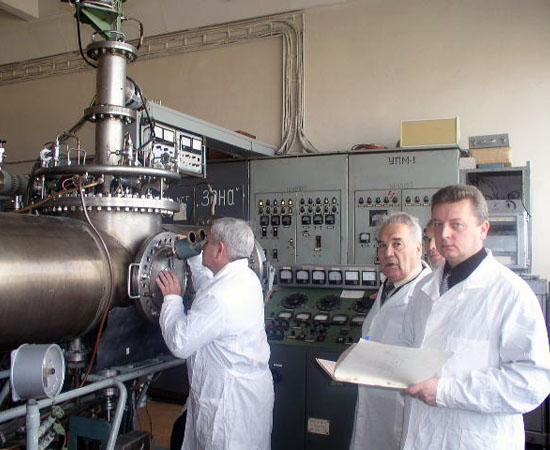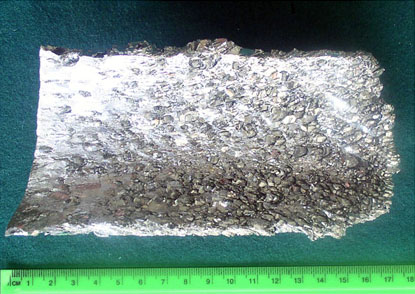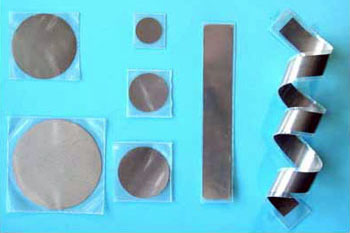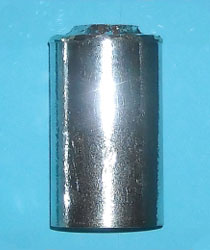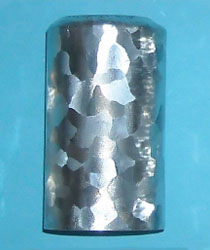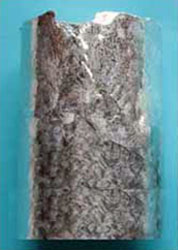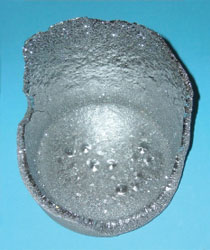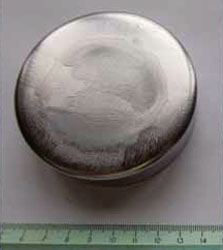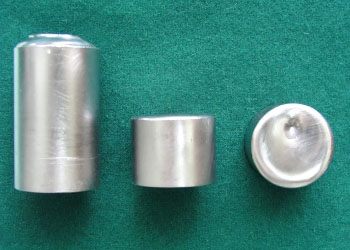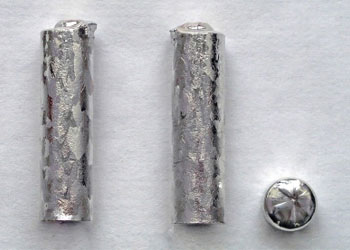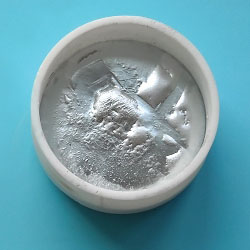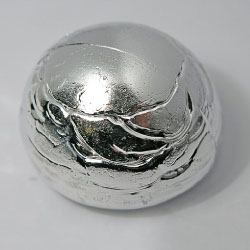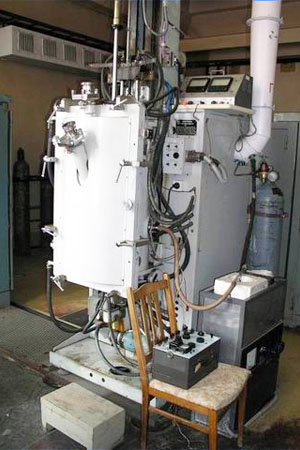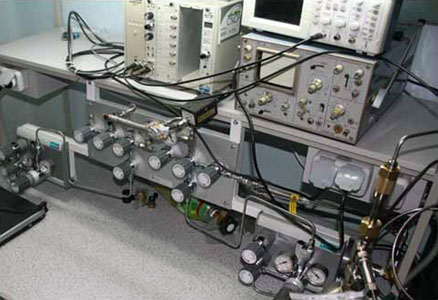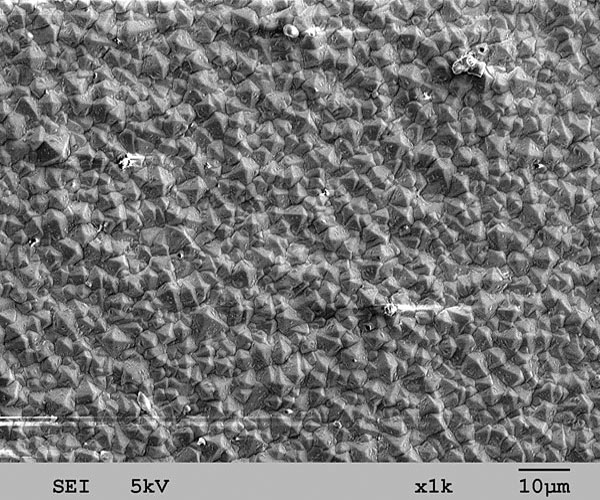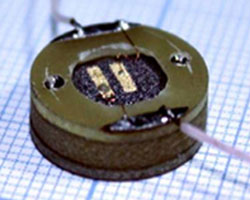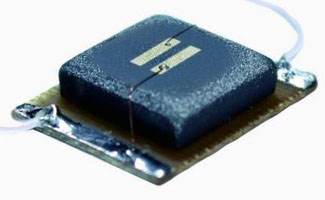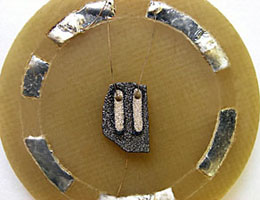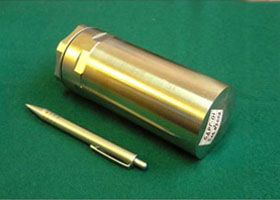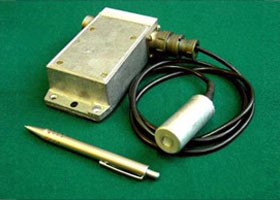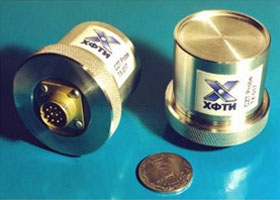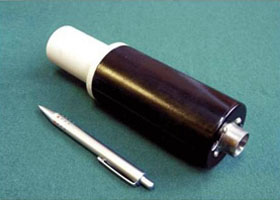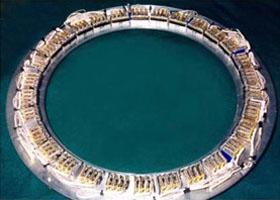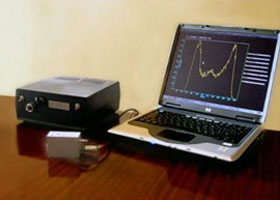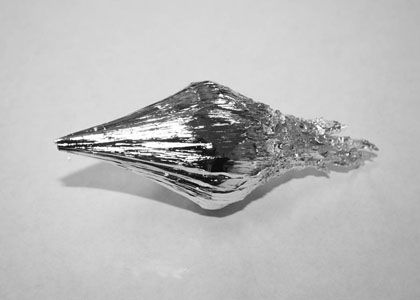
The department of pure metals, metal physics and technology of new materials (11–00) was established in 1974 on the basis of the vacuum metallurgy department of V.Ye. Ivanov. The founders of vacuum metallurgy and vacuum technologies at the Institute were K.D. Sinelnikov and V.Ye. Ivanov.
The first head of the department and the initiator for the construction new building for the department was the Doctor of Sciences in Physics and Mathematics, Professor G.F. Tikhinskiy.
For a long time, the department was headed by the scientist-metal physicist, Academician of NASU V.M. Azhazha. From 2008 to 2018, the department was headed by the Doctor of Technical Sciences S.D. Lavrinenko.
Click here to see the detailed history of the department creation and some facts for the vacuum metallurgy development at NSC KIPT.
In the department, there are 7 laboratories, which employ 6 Doctors of Sciences and 18 PhDs.
The results of work over the past 5 years were published in 378 scientific papers, 137 of them are in journals that are indexed in the leading scientometric databases (Web of Science, Scopus), 12 monographs, 14 patents, 115 reports at conferences; 1 doctoral and 4 PhD theses were prepared and defended. Click here to see the list of publications.
Main directions of work:
Ultrapure Metals
Refining processes, production, investigation of properties, development of technologies, products. The following metals were studied: magnesium, niobium, tantalum, iron, nickel, titanium, vanadium, gallium and others. In case of the need to develop a refining technology or create new alloys based on pure metals, the range of names will be expanded.
Zirconium, its alloys and hafnium
Production processes, refining, investigations on the effect of impurities on the properties, improvement of the existing manufacturing technologies and development of new ones, including equipment.
Physics and technology of nanomaterials
Physical processes for the formation of nanocrystalline, nanocomposite and single-crystal structures in special alloys based on pure metals, study of their physical and mechanical properties, improvement of the principles and methods for creating materials with a given microstructure and improved performance characteristics for use in reactor engineering, electrical engineering, instrument making, gas turbine engineering and medicine.
Beryllium physics
Refining, metal physics, technologies, products. Beryllium belongs to nuclear materials. Therefore, first of all, attention is paid to the development of technologies for its use as biological protection. Beryllium products can be used as a material for the first wall of a thermonuclear reactor.
Superconductors
Development of physical processes for the synthesis of superconductors and production technologies. Investigation of electrophysical properties for new superconducting materials.
Semiconductors
Carrying out the synthesis of semiconductor compounds, growing single crystals, obtaining products and creating sensors for radiation recording.
Major achievements:
1. The process for refining low-melting metals (Ga, Cd, Zn, Te, Pb) to the degree of purity (6N), which is carried out by a combination of vacuum heat treatment, filtration and distillation in one cycle was developed. Such a combination provides deep purification of these metals from metal and penetration impurities (N, O, C) to the level of 1 × 10−5 wt.%. Simulation of temperature conditions for growing single crystals, their electrophysical properties and the processes of metal refining was carried out.
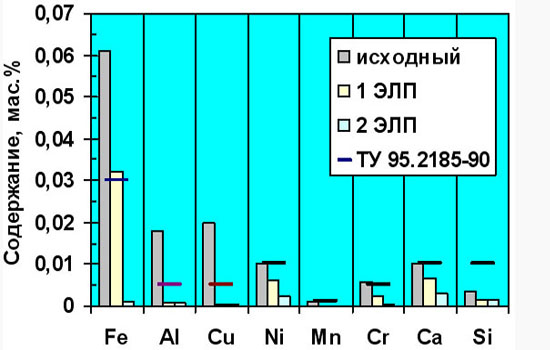
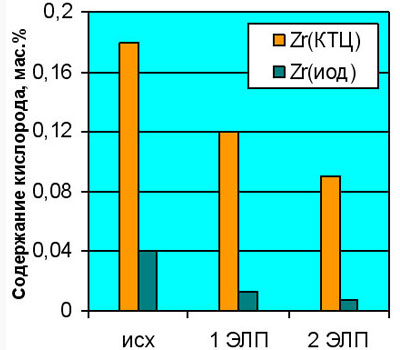
Change in the content of metallic impurities and oxygen in zirconium after two successive electron-beam melts
| No. | Element | Content, wt.% |
|---|---|---|
| 1 | Be | 99.999 |
| 2 | Cd | 99.9999 |
| 3 | Al | 99.9999 |
| 7 | Ga | 99.99999 |
| 8 | Zr | 99.99 |
| 6 | Pb | 99.9995 |
| 7 | V | 99.998 |
| 8 | Nb | 99.9996 |
| 9 | Ti | 99.99 |
| 10 | Zn | 99.9999 |
| 11 | Ta | > 99.99 |
| 12 | Cr | 99.99 |
| 13 | Mo | 99.9999 |
| 14 | W | 99.99995 |
| 15 | Re | 99.9999 |
| 16 | Ru | 99.999 |
| 17 | Os | 99.999 |
2. The technology for the manufacture of thin beryllium foils was developed and the mass production of vacuum-tight foil up to 8 μm thick was set up. The method for producing bulk metal glasses, one of the components of which is beryllium, was developed; the structure and properties of the materials obtained were studied. Prototypes of such materials were manufactured for their use as the first mirrors for plasma diagnostics.
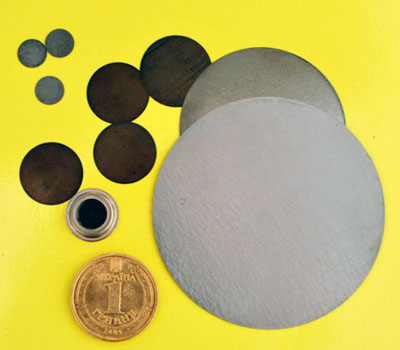
Thin beryllium foils
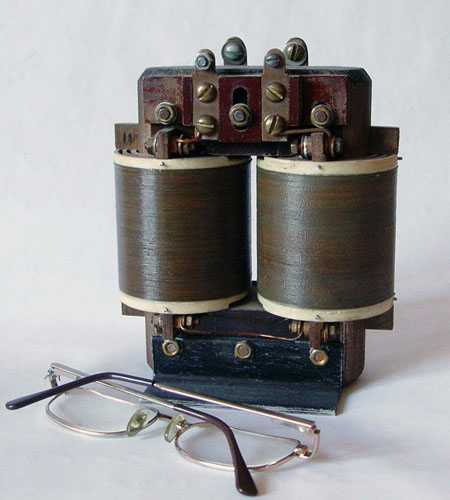
Pilot cryotransformer with the winding of long wire made of high-purity beryllium (ρ = 0.055 μOhm∙cm at 77 К), suitable for use in hyperconductive systems (j ∼ 104 А/сm2)
3. The new methods were developed and the modes for mechanical-thermal treatment of deformable superconductors based on niobium-titanium alloys were optimized. Multifilamentary superconductors with high current-carrying capability were created.
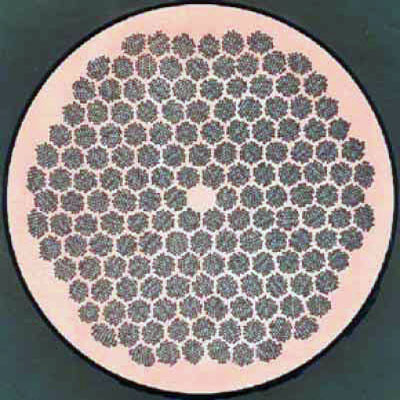
Multifilamentary superconductor based on Nb–Ti
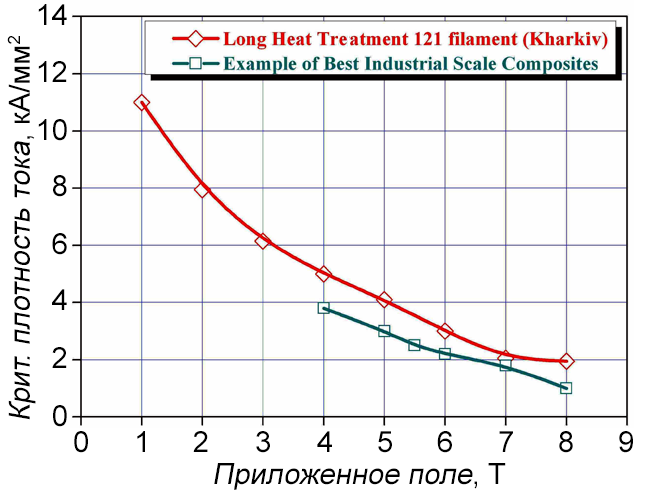
Record level of current carrying capacity in Nb–Ti superconductors (4 kA/mm2, 5 T, 4.2 К)
4. Magnesium of record high purity (∼ 99.9999%) was obtained; the temperature dependence for the electrical resistance of high-purity magnesium in the range of 4.5 − 300 К was studied. By refining the structure using the methods of severe deformation, the mechanical properties were significantly improved and the corrosion rate of biosoluble alloys was reduced by several orders of magnitude. Coronary stents from biosoluble magnesium alloys were manufactured and their properties were studied. New instruments and applicators for oncology were developed from the materials with increased strength and plasticity.

Magnesium single crystal
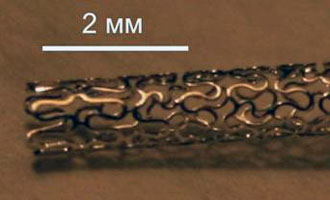
Coronary stent made of biosoluble magnesium alloys
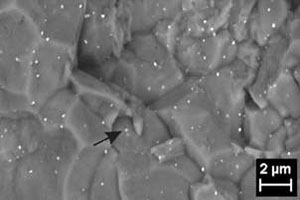
Mg–alloy structure: ultrafine-grained
structure, nano-precipitation
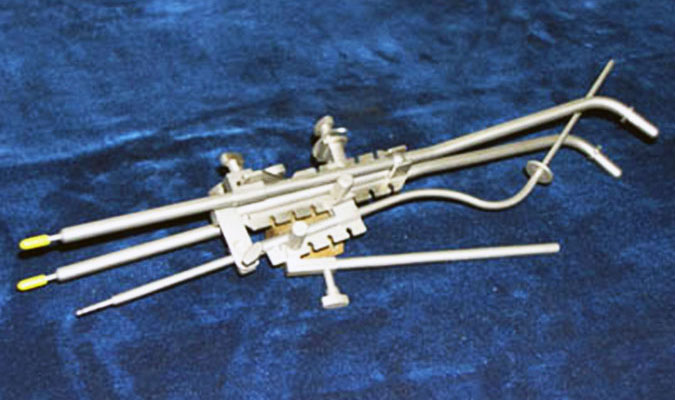
Oncology applicator (high purity ultrafine grain titanium)
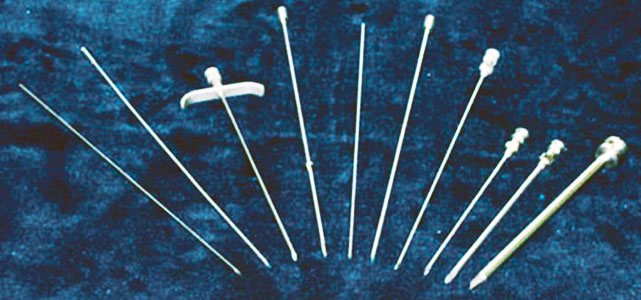
Oncology needles
5. The physical fundamentals for obtaining high-purity hafnium were developed. Estimations and experimental studies for the changes in the concentration of impurities in hafnium during electron beam melting and zone recrystallization (in the electric field as well) were carried out.
6. Research on the optimization of the technological process parameters for obtaining zirconium magnesium thermal sponge at the stages of reducing zirconium tetrachloride from domestic raw materials and vacuum high-temperature treatment of rough zirconium sponge was carried out. This will make it possible to obtain zirconium in accordance with modern requirements for creating zirconium structural materials with improved properties for reactors.
7. Investigation and improvement of metal purification from impurities were carried out. Pure and ultrapure metals (Zr, Hf, Be, Mg, Cd, Zn, Te) were obtained for the production of alloys for nuclear power engineering. The physical and technological fundamentals for obtaining nuclear-pure zirconium, which meets the modern requirements of nuclear power engineering, were developed. The behavior of impurities during zirconium refining by the method of electron beam melting and the effect of zirconium purity on its properties were studied.
8. For the first time, high-purity antique lead (99.9996%) was obtained in the form of granules, which is necessary for producing low-background scintillation crystals of PbWO4.
9. The kinetics for the formation of diffusion hardened near-surface layers on sample pipes made of zirconium alloy Zr–1%Nb during chemical-thermal treatment (TCT) in controlled oxygen-containing and nitrogen media was studied. The regularities for the growth of hardened near-surface layers depending on the treatment time and environment were determined. It was also shown that due to TCT the microhardness of the inner and outer surfaces of FE tubes is significantly increased (from 2.5 to 7 times). This can significantly reduce the damage to the tubes during the operation of the FE.
10. Technological processes for the manufacture of reactor steels modified with nanoparticles of thermostable oxides (oxide dispersion strengthened (ODS) or ODS–steels) were developed. The strength characteristics of the developed austenitic ODS–steel are 2 – 3.5 times higher, and the swelling is 5 times lower than that of the base steel X18H10T. High-entropy alloys (HEA) based on the AlCoCrCuFeNi and CoCrFeNi (Mn, V) systems were obtained and studied. High plasticity of certain compositions was determined. Research is being conducted on the effect of various treatments on their structure and properties.
| Alloy | σ0.2, MPa | σUTS, MPa | δ, % | Grain, μm |
|---|---|---|---|---|
| CoCrFeMnNi | 355 | 660 | 36 | 4.4 |
| 720 | 980 | 37 | 4.9 |
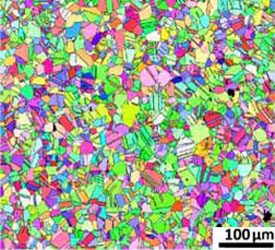
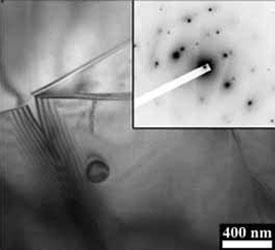
Microstructure of CoCrFeMnNi alloy, after rolling to 80% and annealing at 800°С for 1 h
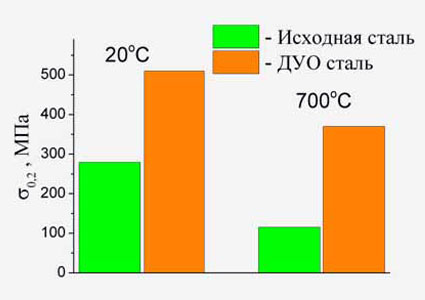
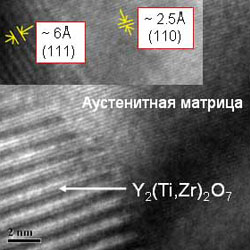
Structure and mechanical properties of ODS steels X18H10T and X18H10T
11. Nanocrystalline zirconium and titanium of various purities, as well as nanostructured alloys based on them, were developed and studied. For the first time, a combination of two methods of extreme impact on metals was applied – severe plastic deformation plus subsequent cryogenic deformation.
12. The processes of refining magnesiothermal sponge zirconium of domestic production by the method of electron-beam melting were studied. This makes it possible to create the necessary preconditions for the use of magnesiothermal zirconium in the development of zirconium structural materials for NPU equipment pieces.
13. Devices based on semiconductor and gas-discharge detectors were developed for the technological processes using ionizing radiation, including NPP, the Chernobyl zone, spent fuel storage and medicine, including semiconductor detectors based on Si, GaAs, CdTe, CdZnTe and CVD diamond coatings, gas-discharge detectors based on noble gases etc.
14. The prototype of gamma-radiation detection unit based on the gas-discharge linear detector and charge-sensitive preamplifier designed for radiation monitoring systems of NPPs was developed and manufactured. The detector is filled with a mixture of high-purity (99.9995%) inert gas Xe and hydrogen. The detection unit characteristics were studied under irradiation with gamma-quants of 241Am, 137Cs, 60Co isotopes.
15. The complex of fundamental studies on the electrophysical and magnetic properties of granular oxide high-temperature superconductors was carried out. For the first time, the course of topological phase transitions - Berezinsky-Kosterlitz-Thoules transitions (BKT–transitions) in the Josephson medium of granular HTSC under the influence of electric and magnetic fields was determined experimentally. Works on the synthesis and investigation of the crystal structure, electromagnetic properties and radiation resistance of the new BCS–superconductor MgB2 were carried out. High-energy permanent magnets based on rare earth metals were developed.
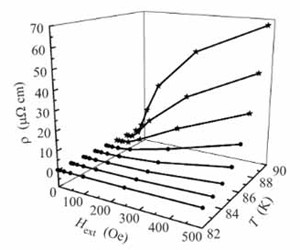
Temperature dependences for the magnetoresistance of granular HTSC YBa2Cu3O7
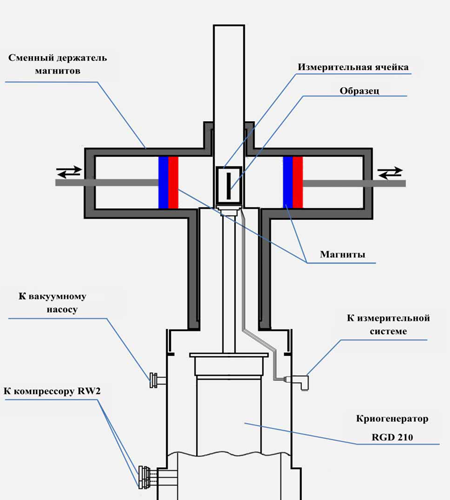
Measuring complex for electrophysical and magnetic properties of materials (12 – 300 К, up to 2 kOe)
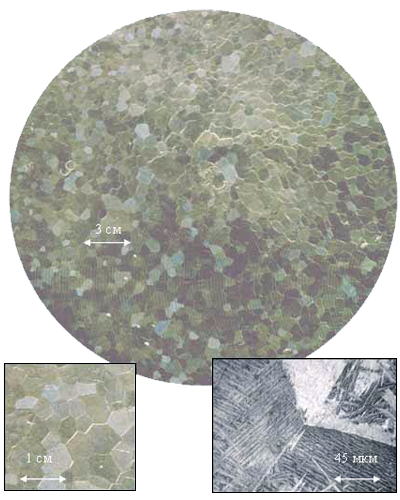
The structure of Zr–1%Nb alloy after double vacuum arc melting
16. The evolution of Zr–1%Nb alloy structure was studied at the increase of iron concentration. Small additions of iron to the alloy result in the change of its structure due to the appearance of precipitates of the Laves phase. As the iron content is increased in the Zr–1%Nb alloy, its microhardness is increased as well. High corrosion resistance of the investigated Zr–1%Nb alloys is shown. It is also shown that alloying with iron makes a significant contribution to the corrosion resistance of Zr–1%Nb alloys in reactor water.
Department structure
– Research laboratory for physics of zirconium and technologies of pure metal.
The main research areas of the laboratory are vacuum and high-vacuum metallurgy; physics and materials science of pure, ultrapure metals and alloys with special physical properties; technological processes for the production of pure metals and structural materials for reactor engineering, electronics and other areas of technology. Among the fundamental results of scientific research of the laboratory, there are research and development of new methods for refining metals, obtaining a number of metals of record purity and determining previously unknown physical properties, establishing the relationship between the chemical composition, structure and physical properties of metals and alloys, works on the synthesis of structural materials for nuclear power engineering.
Laboratory employees take part in the development of industrial technologies for obtaining zirconium, hafnium and calcium of nuclear purity, technologies for refining niobium, gallium, scandium, in the creation of new getter materials, materials for medicine.
– Research laboratory for electrophysical materials and technical superconductors.
In the laboratory, the physical processes for the formation of nanocrystalline, nanocomposite and single-crystal structures in special alloys based on pure metals are studied, as well as their physical and mechanical properties; the principles and methods of creating materials with a given microstructure and increased performance characteristics are improved for use in reactor engineering, electrical engineering, instrument making, gas turbine engineering and medicine.
– Research Laboratory of Metallurgy and Technology of Beryllium and Structural Materials.
Work on the creation of structural grades for beryllium based on powder and cast materials is carried out. The technology and equipment for producing spherical beryllium powders with metastable structure by melt spraying was developed; the technology for producing vacuum-tight foils and thin wires was developed, and beryllium hyperconductivity was investigated.
In addition to beryllium materials, the research on the development of technology for obtaining new structural materials is carried out. The processes for the formation of structural characteristics and their influence on the physicomechanical and radiation properties of materials based on zirconium and hafnium for nuclear and thermonuclear power engineering are studied.
– Research laboratory for the physical principles of creating new beryllium materials.
Investigation on the physical nature of plastic flow and fracture of light metals and alloys; development of new methods of plasticization for metals and alloys used in nuclear engineering and medicine; development of new methods for intensive deformation of materials; development of new materials with high strength and ductility (beryllium, magnesium, etc.); studying the correlation between mechanical properties and structural factors; development of new methods for studying plastic deformation and fracture of metals and alloys, including acoustic emission, fracture toughness, impact toughness with the separation of deformation work and fracture work.
– Research Laboratory for Physical Materials Science of Functional Ceramic Materials.
Fundamental research of materials with special electrophysical, magnetic, elastic and other properties in a wide range of temperatures, magnitude and direction of the external magnetic field, transport current density etc., which are already used or could be used in the nuclear power industry of Ukraine for transportation, transformation and accumulation of NPP energy, as well as detection of various types of radiation.
– Research laboratory of semiconductor materials.
Refining processes of low-melting metals (Ga, Cd, Zn, Te, Pb, etc.) to the level of purity (6N) by the combination of vacuum heat treatment, filtration and distillation in one cycle. These technologies are a step-by-step purification from highly volatile impurities with filtration and purification from non-volatile impurities using getter filter, which provides deeper purification of metals from metallic impurities, including interstitial impurities (N, O, C) to the level of 1 × 10−5 wt.%.
Simulation of temperature conditions for growing single crystals, their electrophysical properties, as well as metal refining processes.
– Research laboratory for new technological solutions.
Development of devices based on semiconductor and gas-discharge detectors for the technological processes using ionizing radiation, including nuclear power plants, the Chernobyl zone, spent fuel storages and medicine.
Research and manufacture of semiconductor detectors based on Si, GaAs, CdTe, CdZnTe and CVD diamond coatings; research and manufacture of gas-discharge detectors based on noble gases; development and manufacture of various devices for detecting ionizing radiation.
Publications
| 1. | G.A. Salishchev, M.A. Tikhonovsky, D.G. Shaysultanov, N.D. Stepanov, A.V. Kuznetsov, I.V. Kolodiy, A.S. Tortika, O.N. Senkov. Effect of Mn and V on Structure and Mechanical Properties of High-entropy Alloys Based on FeCrCoNi System. Journal of Alloys and Compounds. 2014, No. 591, р. 11 – 21. |
|---|---|
| 2. | N. Stepanov, M. Tikhonovsky, N. Yurchenko, D. Zyabkin, M. Klimova, S. Zherebtsov, A. Efimov, G. Salishchev. Effect of Cryo-deformation on Structure and Properties of CoCrFeNiMn High-entropy Alloy. Intermetallics. April 2015, v. 59, p. 8 – 17. |
| 3. | V.V. Derevyanko, T.V. Sukhareva, V.A. Finkel, M.S. Sunhurov, Yu.N. Shakhov. Phase Transitions in a MgB2 Granular BCS Superconductor in Weak Magnetic Fields. Physics of the Solid State. 2017, 59(2), p. 229 – 235. |
| 4. | Г.П. Ковтун, Р.С. Бойко, Ф.А. Даневич, Б.Н. Кропивянский, В.М. Мокина, Т.С. Потина, Д.А. Солопихин, И.А. Тупицына, А.П. Щербань, В.Н. Шлегель. Производство и свойства низкофоновых сцинтилляторов вольфраматов кадмия и свинца для поиска двойного бета-распада. Ядерна фізика та енергетика. 2014, т. 15, № 1, с. 92 – 100. |
| 5. | Arun S. Wagh, S.Yu. Sayenko, A.N. Dovbnya, V.A. Shkuropatenko, R.V. Tarasov, A.V. Rybka, A.A. Zakharchenko. Durability and Shielding Performance of Borated Ceramicrete Coatings in Beta and Gamma Radiation Fields. Journal of Nuclear Materials. July 2015, v. 462, p. 165 – 172. |
| 6. | Iu. Nasiekaa, V. Strelchuk, M. Boyko, V. Voevodin, A. Vierovkin, A. Rybka, V. Kutniy, S. Dudnik, V. Gritsina, O. Opalev, V. Strel’nitskij. Raman and Photoluminescence Characterization of Diamond Films for Radiation Detectors. Sensors and Actuators A: Physical. 2015, v. 223, p. 18 – 23. |
| 7. | О.В. Єфімов, М.М. Пилипенко, Т.В. Потаніна, В.Л. Каверцев, Т.А. Гаркуша. Реактори і парогенератори енергоблоків АЕС: схеми, процеси, матеріали, конструкції, моделі. Монографія. Харків: ТОВ «В справі». 2017, 420 с. |
| 8. | Н.Н. Пилипенко, С.Д. Лавриненко, П.Н. Вьюгов. Цирконий высокой чистоты. «Высокочистые вещества». Коллективная монография. Москва: Научный мир. 2018, гл. 22, с. 517 – 527. |
| 9. | Е.D. Tabachnikova, А.V. Podolskiy, M.O. Laktionova, N.A. Bereznaia, M.A. Tikhonovsky, A.S. Tortika. Mechanical Properties of the CoCrFeNiMnVx High Entropy Alloys in Temperature Range 4.2–300 K. Journal of Alloys and Compounds. 2017, v. 698, p. 501 – 509. |
| 10. | N.D. Stepanov, N.Y. Yurchenko, S.V. Zherebtsov, M.A. Tikhonovsky, G.A. Salishchev. Aging Behavior of the HfNbTaTiZr High Entropy Alloy. Materials Letters. 2018, v. 211, р. 87 – 90. |
| 11. | Jongun Moon, Yuanshen Qi, Elena Tabachnikova, Yuri Estrin, Won-Mi Choi, Soo-Hyun Joo, Byeong-oo Lee, Aleksey Podolskiy, Mikhail Tikhonovsky, Hyoung Seop Kim. Deformation-induced Phase Transformation of Co20Cr26 High-entropy Alloy During High-pressure Torsion at 77 K. Materials Letters. 2017, v. 202, p. 86 – 88. |
| 12. | V. Bovda, I. Guk, S. Kononenko, V. Lyashchenko, A. Mytsykov, L. Onischenko. Sm-Co Based Magnetic System for 10 Mev Technological Electron Accelerator LU-10M. East European Journal of Physics. 2018, v. 5(3), p. 68 – 74. |
| 13. | Е.И. Кузнецова, С.В. Сударева, Т.П. Криницина, Ю.В. Блинова, Е.П. Романов, Ю.Н. Акшенцев, М.В. Дегтярев, М.А. Тихоновский. Механизм образования и особенности структуры массивных образцов соединения MgB2. ФММ. 2014, 115(2), с. 186 – 197. |
| 14. | V. Ovcharenko, A. Kuprin, G. Tolmachova, I. Kolodiy, A. Gilewicz, O. Lupicka, J. Rochowicz, B. Warcholinski. Deposition of chromium nitride coatings using vacuum arc plasma in increased negative substrate bias voltage. Vacuum. 2015, v. 117, p. 27 – 34. |
| 15. | А.В. Бабун, К.В. Ковтун. Порошковая металлургия бериллия. Монография. Харьков, «Синтекс». 2016, 224 с. |
| 16. | A.S. Bakai, K.V. Kovtun, L.N. Davydov. Combined Effect of Irradiation and Molten Fluoride Salt on Ni-Based Alloys. Thorium Energy for the World. Editor by Revol JP Springer. 2016, p. 393 – 394. |
| 17. | V.S. Trush, V.M. Fedirko, O.H. Luk’yanenko, K.V. Kovtun. Optimization of the Medium of Thermal Treatment of GFE-1 Hafnium Alloy. Materials Science. September 2017, v. 53, No. 2, p. 194 – 199. |
| 18. | Arun S. Wagh, S.Yu. Sayenko, V.A. Shkuropatenko, R.V. Tarasov, M.P. Dykiy, Y.O. Svitlychniy, E.A. Ulybkina. Cesium Immobilization in Struvite Structure. Journal of Hazardous Materials. 2016, v. 302, p. 241 – 249. |
| 19. | А.П. Щербань, Г.П. Ковтун, Ю.В. Горбенко, Д.А. Солопихин, Л.А. Пироженко. Получение высокочистых гранулированных металлов кадмия, цинка и свинца. Технология и конструирование в электронной аппаратуре. 2017, № 1 – 2, с. 55 — 60. |
| 20. | И. Папиров, П. Стоев, А. Николаенко, Ю. Тузов. Влияние структурных факторов на прочностные и вязкостные характеристики бериллия. Монография. Lambert Academic Publishing, Saarbrucken. 2014, 450 с. |
| 21. | И. Папиров, А. Николаенко, П. Стоев, Ю. Тузов, В.С. Шокуров. Пластичность и сверхпластичность бериллия. Монография. Москва, Изд. дом МИСиС. 2014, 208 с. |
| 22. | И.И. Папиров, П.И. Стоев. Изучение акустической эмиссии материалов реакторостроеня. Монография. Харьков, Национальный научный центр «Харьковский физико-технический институт»., 2015, 60 с. |
| 23. | И. Папиров, А. Николаенко, Ю. Тузов. Физика бериллия. Монография. Москва, Национальный исследовательский ядерный университет «МИФИ». 2015, 366 с. |
| 24. | I. Papirov, A. Nikolaenko, Yu. Tuzov. Beryllium. Монография. Moscow, National Research Nuclear University MEPhi. 2017, 344 p. |
| 25. | И.И. Папиров, А.А. Николаенко, В.С. Шокуров. Получение мелкозернистого бериллия высокой чистоты и изучение его механических свойств. Гл.3 монографии «Актуальные проблемы прочности», т.1 Витебск. 2018, 23 с. |
| 26. | П.И. Стоев, С.В. Литовченко, И.А. Гирка. Химическая коррозия металлов. Монография. ХНУ. 2019. |
| 27. | И.И. Папиров, П.И. Стоев, Т.Г. Емлянинова, А.А. Николаенко. Исследование акустической эмиссии при деформации магниевого сплава WE43. Сучасні проблеми фізики металів і металічних систем. Киев, 2016, с. 170. |
| 28. | M.S. Sunhurov, V.V. Derevyanko, T.V. Sukhareva, V.A. Finkel. Phase Transitions for MgB2 Granular BCS-superconductor in Weak Magnetic Fields. IEEE Xplore Digital Library. 2016, YSF-2016, p. 92 – 95. |
| 29. | M.S. Sunhurov, T.V. Sukhareva, V.A. Finkel. Investigations and Developments of the New Type Strongly Textured Paramagnetic Ni-W Substrates with Buffer Coating for Creating the Second Generation High Temperature Superconductors. IEEE Xplore Digital Library. 2016, YSF-2016, p. 96 – 99. |
| 30. | В.В. Деревянко, М.С. Сунгуров, Т.В. Сухарева, В.А. Финкель, Ю.Н. Шахов. Фазовые переходы в гранулярном BCS-сверхпроводнике MgB2 в слабых магнитных полях. Физика твёрдого тела. 2017, т. 59, № 2, c. 223 – 229. |
| 31. | M.S. Sunhurov, S.A. Leonov, T.V. Sukhareva, V.V. Derevyanko, V.A. Finkel, Yu.N. Shakhov. Research of the Processes of Texture Formation in the System «NiW Substrate and TiN Coating» and Creating of the New Type Textured Paramagnetic Substrates for HTS based on YBa2Cu3O7. Functional Materials. 2017, v. 24, № 1, p. 63 – 67. |
| 32. | M.S. Sunhurov, V.V. Derevyanko, S.A. Leonov, T.V. Sukhareva, V.A. Finkel, Yu.N. Shakhov. Structural Aspects of the Phase and Texture Formation Processes in Thin-layer Ni-W/TiN Systems, Perspective for Creating High-temperature Superconductors of the Second Generation. Functional Materials. 2017, v. 24, № 3, p. 353 – 359. |
| 33. | V.V. Derevyanko, V.A. Finkel, T.V. Sukhareva. Phase Transitions and Vortex Structure Evolution in Two-level High-temperature Granular Superconductor YBa2Cu3O7–σ Under Temperature and Magnetic Field. Physics of the Solid State. 2017, v. 59, No. 8, p. 1492 – 1500. |
| 34. | V.V. Derevyanko, M.S. Sunhurov, T.V. Sukhareva, V.A. Finkel, Yu.N. Shakhov. Investigation of Crystal Structure and Electrophysical Properties of Ni-W Alloys: Percolation Processes. IEEE Xplore Digital Library. 2017, YSF-2017, p. 167 – 170. |
| 35. | V.V. Derevyanko, V.A. Finkel, T.V. Sukhareva, M.S. Sunhurov. Evolution of Vortex Structure of Two-Level Granular High Temperature Superconductor YBa2Cu3O7–σ under Influnece of Temperature, Magnetic Field and Transport Current. IEEE Xplore Digital Library. 2017, YSF-2017, p. 171 – 174. |
| 36. | Т.В. Сухарева, В.А. Финкель. Фазовый переход Березинского–Костерлица–Таулесcа в джозефсоновской среде двухуровневого гранулярного высокотемпературного сверхпроводника YBa2Cu3O7–σ. ФНТ. 2018, т. 44, № 3, c. 258 – 263. |
| 37. | В.В. Деревянко, Т.В. Сухарева, В.А. Финкель. Влияние температуры, внешнего магнитного поля и транспортного тока на электрофизические свойства, процессы эволюции вихревой структуры и фазовые переходы в подсистемах сверхпроводящих гранул и «слабых связей» гранулярного двухуровневого высокотемпературного сверхпроводника YBa2Cu3O7–σ. ФТТ. 2018, т. 60, в. 3, с. 465 – 475. |
| 38. | V.V. Derevyanko, M.S. Sunhurov, T.V. Sukhareva, V.A. Finkel, Yu.N. Shakhov. Crystal Structure and Electrical Resistance of Ni-W Alloys. Functional Materials. 2018, v. 25, № 1, p. 048 – 053. |
| 39. | В.В. Деревянко, М.С. Сунгуров, Т.В. Сухарева, В.А. Финкель, Ю.Н. Шахов. Особенности влияния состава и кристаллической структуры на поведение электрофизических свойств сплавов системы Ni(1-x)Wx при низких температурах. ФТТ. 2018, т. 60, в. 10, с. 1896 – 1900. |
| 40. | М.О. Азаренков, І.М. Неклюдов, В.М. Береснев, В.М. Воєводін, О.Д. Погребняк, О.В. Соболь, Г.П. Ковтун, В.Г. Удовицький, С.В. Литовченко, П.В. Турбін, В.О. Чишкала. Наноматеріали і нанотехнології. Навчальний посібник. Харків: ХНУ ім. В.Н. Каразіна. 2014, 316 с. |
| 41. | Г.П. Ковтун. Электроперенос как способ глубокого рафинирования металлов. Коллективная монография «Высокочистые вещества». Москва, «Научный мир». 2018, ч. 1, с. 90 – 104. |
| 42. | А.И. Кравченко. Разработка перспективных схем зонной дистилляции. Перспективные материалы. 2014, № 7, с. 68 – 72. |
| 43. | А.И. Кравченко. Зависимость эффективного коэффициента разделения в некоторых металлических системах основа-примесь от степени перегонки. Неорганические материалы. 2015, т. 51, № 2, с. 146 – 147. |
| 44. | А.И. Кравченко. Расчёт дистилляционного рафинирования вещества с легколетучей и труднолетучей примесями. Неорганические материалы. 2018, т. 54, № 5, с. 520 – 522. |
| 45. | A.P. Shcherban, O.A. Datsenko, G.P. Kovtun. Construction of Solidus Lines of Binary Metal Systems Having a Low Solubility of Components in the Solid Phase. Open Journal of Metal. September 23, 2014, v. 4, No. 3. |
| 46. | Г.П. Ковтун, А.П. Щербань, Д.А. Солопихин. Глубокое рафинирование легкоплавких металлов дистилляцией в вакууме. Коллективная монография «Высокочистые вещества». Издательство: Научный мир. 2018, гл. 21, с. 496 – 516. |
| 47. | L. Davydov, P. Fochuk, A. Zakharchenko, V. Kutny, A. Rybka, N. Kovalenko, S. Sulima, I. Terzin, A. Gerasimenko, M. Kosmyna, V. Sklyarchuk, O. Kopach, O. Panchuk, A. Pudov, A.E. Bolotnikov, R.B. James. Improving and Characterizing the Quality of (Cd,Zn)Te Crystals for Detecting Gamma Radiation. IEEE Transactions of the Nuclear Science. 2015, v. 62, No. 4, p. 1779 – 1784. |
| 48. | A.O. Pudov, A.S. Abyzov, S.A. Sokolov, L.N. Davydov, A.V. Rybka, V.E. Kutny, S.I. Melnikov, G.A. Kholomyeyev, S.A. Leonov, A.A. Turchin. Measurements and Modeling of Charge Carrier Lifetime in Compressed Xenon. Nuclear Inst. and Methods in Physics Research, A. 2018, v. 892, p. 98 – 105. |
| 49. | V. Bilous, V. Borysenko, V. Voyevodin, S. Didenko, M. Ilchenko, O. Rybka, O. Kuznetsov, Y. Plisak. Layered Metal Composites: Newest Generation of Radiation-Protective Materials. Journal of Materials Science and Chemical Engineering. 2014, 2, p. 6 – 11. |
| 50. | В.Е. Кутний, А.В. Рыбка, Л.Н. Давыдов, А.А. Захарченко, Д.В. Кутний, А.С. Абызов Детекторы ионизирующих излучений на основе теллурида кадмия-цинка. Харьков: Тип. Мадрид. 2021, 352 стр. |
Employees
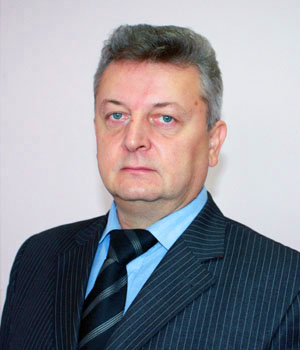
PYLYPENKO NIKOLAY NIKOLAEVICH
Head of the department
Doctor of Technical Sciences by the specialty 01.04.07 - "Solid State Physics"
Senior Researcher
Phone. +38(057) 335-65-87, +38(066) 799-43-07
email: mpylypenko@kipt.kharkov.ua
Research interests:
vacuum metallurgy, solid state physics, production of pure and ultrapure metals, materials science. Investigation of the refining processes for refractory and chemically active metals, development of basic technologies for obtaining ultrapure metals and alloys based on them for nuclear power engineering and other sectors of the national economy. Specialist in the field of metal physics, vacuum metallurgy and physical materials science for rare and refractory metals (including Zr, Hf, Ta, V, Fe, Ni, Mg etc.). With his participation, the physical and technological principals of metal refining in high and ultrahigh vacuum were developed, the use of ultrahigh vacuum pumping methods and the method of mass spectrometric control of gas medium during heat treatment and melting of metals in vacuum were substantiated.
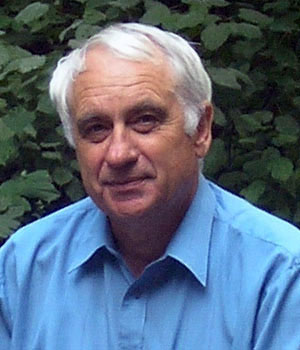
TIKHONOVSKIY MIKHAIL ANDREEVICH
Head of the Laboratory "Electrophysical Materials and Technical Superconductors"
PhD in Physics and Mathematics by the specialty 01.04.07 - "Solid State Physics"
Phone. +38(057) 335-65-28
email: tikhonovsky@kipt.kharkov.ua
Research interests:
development of new materials, including the steels of high-entropy alloys for nuclear power engineering, production of nanostructured materials by severe plastic deformation and mechanical alloying, investigation of the phase and structure formation processes under various effects on the materials, as well as of the physical and mechanical properties for the produced materials. Research profile: solid state physics and physical materials science.
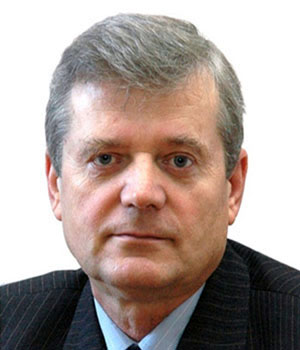
KOVTUN KONSTANTIN VASILIEVICH
Senior Researcher, Director of the State Enterprise "STC "Beryllium"" of NASU
PhD in Physics and Mathematics by the specialty 01.04.07 - "Solid State Physics"
Senior Researcher
Laureate of the State Prize of Ukraine in Science and Technology, 2018
Phone. +38(057) 335-65-01
email: kkovtun@kipt.kharkov.ua
Research interests:
refining processes for low-melting metals; synthesis, study of the crystalline structure, electromagnetic properties and radiation resistance for new BCSsuperconductors; methods for the formation of ultrafine-grained and nanocrystalline structures in reactor materials (zirconium and its alloys, niobium, tantalum) by severe plastic deformation.
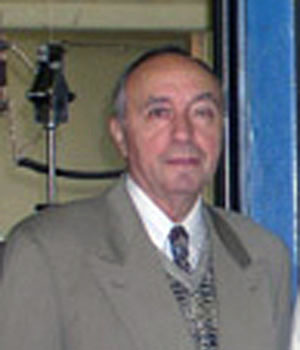
PAPIROV IGOR ISAAKOVICH
Head of the laboratory "Physical basis for the development of new beryllium materials"
D.Sci. in Physics and Mathematics by the specialty 01.04.07 - "Solid State Physics"
Professor
Phone. +38(057) 335-60-27
email: garin@kipt.kharkov.ua, papirov@kipt.kharkov.ua
Research interests:
study of the structural characteristics and mechanical properties for the materials of different classes, superplastic and bio-soluble materials.
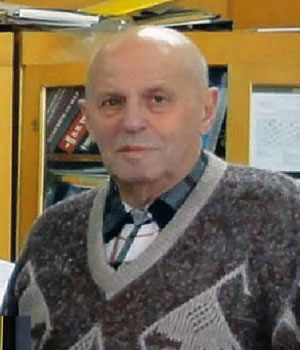
FINKEL VITALIY ALEXANDROVICH
Head of the laboratory "Physical materials science of functional ceramics"
D.Sci. in Physics and Mathematics by the specialty 01.04.07 - "Solid State Physics"
Professor
Phone. +38(057) 335-60-21
email: finkel@kipt.kharkov.ua
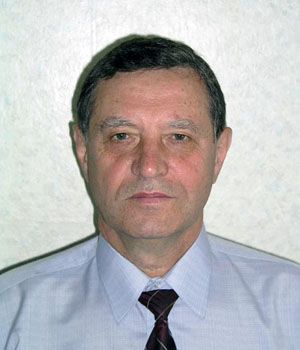
KOVTUN GENNADIY PROKOFIEVICH
Head of the laboratory "Semiconductor Materials"
D.Sci. in Physics and Mathematics by the specialty 01.04.07 - "Solid State Physics"
Professor
Laureate of the State Prize of Ukraine in Science and Technology, 2016
Phone. +38(057) 335-66-52
email: gkovtun@kipt.kharkov.ua
Research interests:
development of new processes for producing ultrapure metals, study of their properties in the ultrapure state, production of semiconductor, structural and functional materials on their basis.
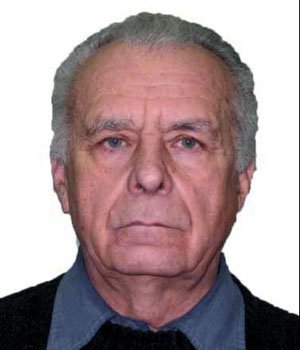
KUTNIY VLADIMIR EVDOKIMOVICH
Head of the laboratory "New technological developments"
PhD in Technical Sciences by the specialty 05.16.01 - "Metallurgy and heat treatment of metals"
Senior Researcher
USSR State Prize, 1976
Phone. +38(057) 335-66-37
email: kutny@kipt.kharkov.ua
Research interests:
investigation of electrophysical characteristics and development of semiconductor and gas-filled detectors for measuring ionizing radiation.
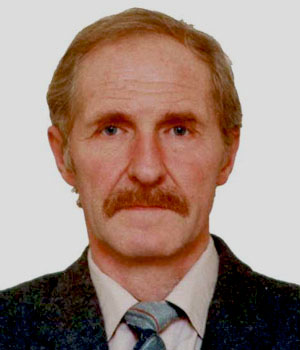
STOEV PETR ILYICH
Leading Researcher
D.Sci. in Physics and Mathematics by the specialty 01.04.13 - "Physics of Metals"
Professor
Phone. +38(057) 335-60-32
email: stoev@kipt.kharkov.ua
Research interests:
investigation of the structural and mechanical properties for the new construction materials: mechanical and viscous characteristics, acoustic emission.
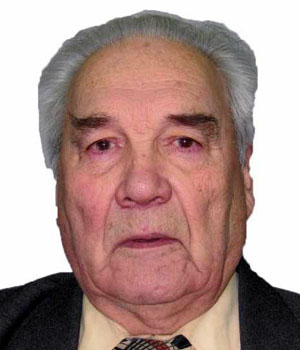
VYUGOV PETR NIKOLAEVICH
Senior Researcher
PhD in Physics and Mathematics by the specialty 01.04.07 - "Solid State Physics"
Senior Researcher
Phone. +38(057) 335-60-29
email: pvjugov@kipt.kharkov.ua
Research interests:
production of pure metals and substances, investigation of the effect of purity on properties.
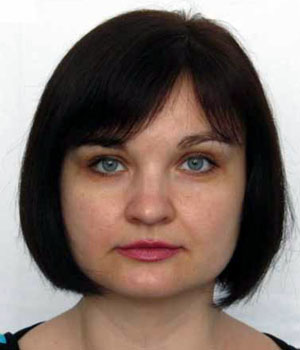
DROBYSHEVSKAYA ANNA ALEXANDROVNA
Senior Researcher
PhD in Technical Sciences by the specialty 01.04.07 – "Solid State Physics"
Phone. +38(057) 335-67-12
email: danna11@kipt.kharkov.ua
Research interests:
studying the influence of the amount of iron in the Zr1% Nb alloy on its structure, physical, mechanical and corrosion properties, as well as studying the effect of radiation exposure on zirconium alloys.
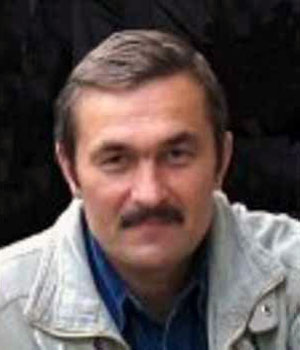
VELIKODNYI ALEXEY NIKOLAEVICH
Senior Researcher
PhD in Physics and Mathematics by the specialty 01.04.13 - "Physics of Metals"
Senior Researcher
Laureate of the State Prize of Ukraine in Science and Technology, 2018
Phone. +38(057) 335-62-61
Research interests:
investigation of the effect of electronic spectrum features on the mechanical properties of alloys. Development of the promising nanostructured materials for nuclear power engineering. Development and implementation of surgical instruments for the removal of foreign bodies in the treatment of gunshot wounds.
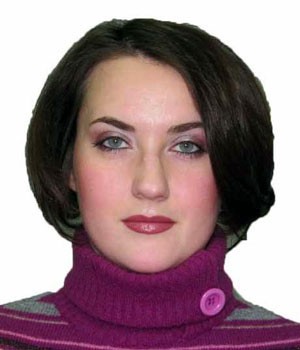
KUTNIY KSENIYA VLADIMIROVNA
Senior Researcher
PhD in Physics and Mathematics by the specialty 01.04.07 – "Solid State Physics"
Phone. +38(057) 335-65-28
email: kutnjakv1984@nas.gov.ua
Research interests:
development of nanomaterials and ultrafine-grained materials based on pure titanium and magnesium alloys for medical applications using various types of severe plastic deformations together with heat treatment and cryogenic deformation.
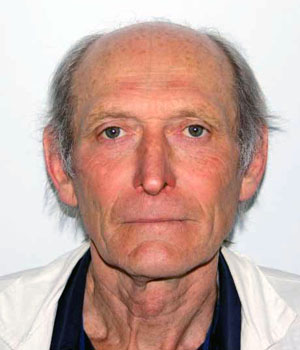
KISLYAK IGOR FILIPOVICH
Senior Researcher
PhD in Physics and Mathematics by the specialty 01.04.07 – "Solid State Physics"
Docent
Phone. +38(057) 335-65-28
email: kislyakip1952@nas.gov.ua
Research interests:
studying the effect of severe plastic deformations by upsetting-extrusion-drawing together with quasihydroextrusion at room and cryogenic (liquid nitrogen) temperatures on the structure, mechanical properties and acoustic emission of iodide titanium. Recently – investigation of HEA and ODS–HEA.
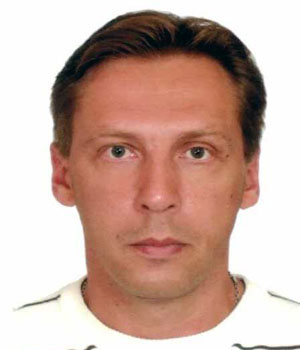
AZHAZHA ROMAN VLADIMIROVICH
Senior Researcher
PhD in Technical Sciences by the specialty 01.04.07 - "Solid State Physics"
Phone. +38(050) 533-77-39
Research interests:
studying physical processes for the formation of structural characteristics and their influence on the physical and mechanical properties of the materials based on Be, Zr, Hf.
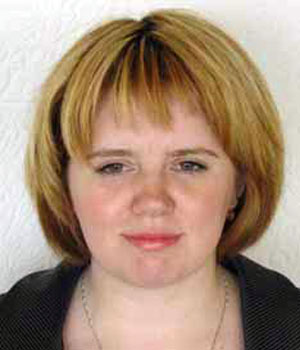
BOVDA VERA ALEXANDROVNA
Senior Researcher
PhD in Technical Sciences by the specialty 01.04.07 – "Solid State Physics"
Phone. +38(057) 335-60-27
Research interests:
investigation of the structural and magnetic properties for hard magnetic materials of different classes based on transition and rare earth metals.
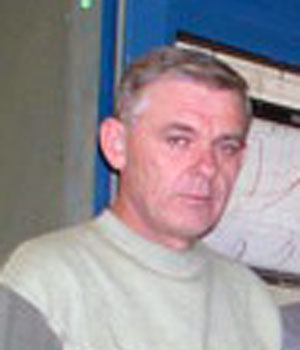
SHOKUROV VLADIMIR SERGEEVICH
Senior Researcher
PhD in Technical Sciences by the specialty 01.04.07 - "Solid State Physics"
Phone. +38(057) 335-62-27
Research interests:
development of the materials for nuclear and aerospace technology, investigation and production of plastic, superplastic and ultrapure materials. Specialist in the field of physics of plastic deformation for metals, materials and devices of medicine.
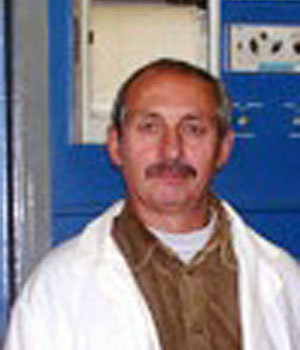
PIKALOV ANATOLIY IVANOVICH
Senior Researcher
PhD in Technical Sciences by the specialty 01.04.07 - "Solid State Physics"
Phone. +38(057) 335-62-27
Research interests:
development of the materials for nuclear and space technology, investigation and production of plastic, superplastic and ultrapure materials. Specialist in the field of physics of plastic deformation for metals, materials and devices of medicine.
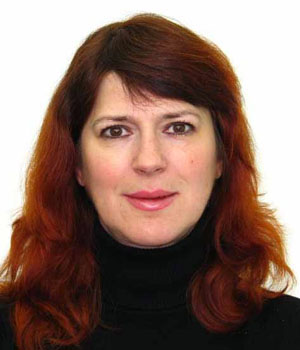
SUKHAREVA TATIANA VITALIEVNA
Senior Researcher
D.Sci. in Physics and Mathematics by the specialty 01.04.07 - "Solid State Physics"
Senior Researcher
Phone. +38(057) 335-60-21
email: t.sukhareva.2003@gmail.com
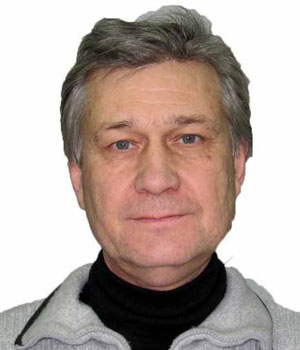
KRAVCHENKO ALEXANDER IVANOVICH
Senior Researcher
PhD in Technical Sciences by the specialty 01.04.07 - "Solid State Physics"
Senior Researcher
Phone. +38(057) 335-69-05
email: alex@krawa.net
Research interests:
development of theory and practice for obtaining high-purity substances by distillation, sublimation and crystallization.
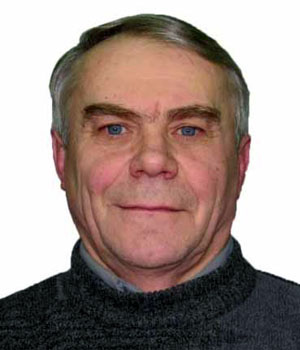
SHCHERBAN ALEXEY PETROVICH
Senior Researcher
D.Sci. in Physics and Mathematics by the specialty 01.04.07 – "Solid State Physics"
Senior Researcher
Laureate of the State Prize of Ukraine in Science and Technology, 2016
Phone. +38(057) 335-69-05
email: shcherban@kipt.kharkov.ua
Research interests:
investigation of the reguliarities of behavior for the impurities during distillation and crystallization purification of metals (including isotopically enriched ones), development of new efficient processes and devices for obtaining metals and high-purity substances, investigation of their properties.
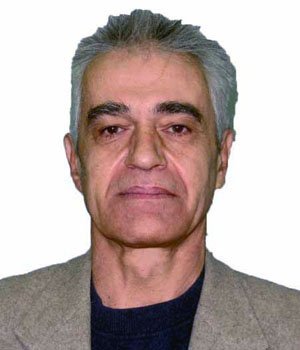
MALYKHIN DMITRIY GEORGIEVICH
Senior Researcher
PhD in Physics and Mathematics by the specialty 01.04.07 - "Solid State Physics"
Phone. +38(057) 335-66-52
Research interests:
reactor materials science, X-ray analysis for the structure and texture of metals and alloys.
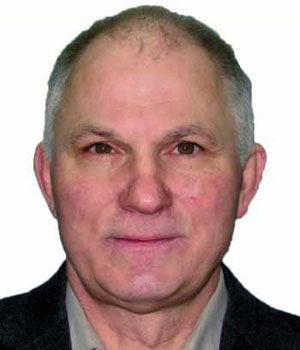
RYBKA ALEXANDER VIKTOROVICH
Senior Researcher
PhD in Physics and Mathematics by the specialty 01.04.21 - "Radiation Physics and Nuclear Safety"
Senior Researcher
Phone. +38(057) 335-66-37
email: rybka@kipt.kharkov.ua
Research interests:
investigation of electrophysical characteristics and development of semiconductor and gas-filled detectors for measuring ionizing radiation.
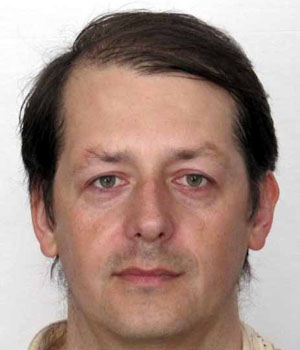
PUDOV ALEXEY OLEGOVICH
Senior Researcher
PhD in Physics and Mathematics on the specialty 01.04.13 - "Physics of Metals"
Phone. +38(057) 335-66-37
email: pudov@kipt.kharkov.ua
Research interests:
investigation of electrophysical characteristics and development of semiconductor and gas-filled detectors for measuring ionizing radiation.
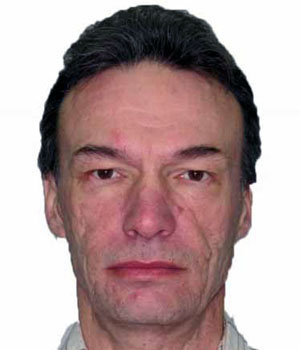
KOZHEVNIKOV OLEG EVGENIEVICH
Researcher
PhD in Physics and Mathematics by the specialty 01.04.07 – "Solid State Physics"
Phone. +38(057) 335-67-12
email: kozhevnikov@kipt.kharkov.ua
Research interests:
investigation of the refining processes for metals (hafnium, zirconium, molybdenum, niobium, nickel, gallium) by the methods of electron-beam and zone melting in vacuum in order to obtain high-purity metal samples and to study the physical and mechanical properties of the materials obtained.
